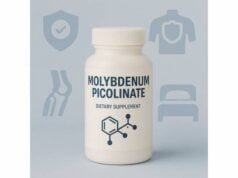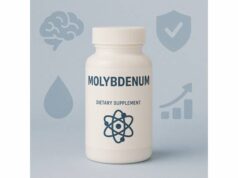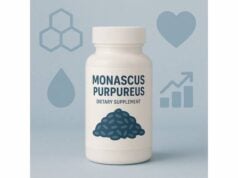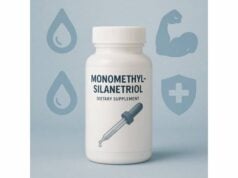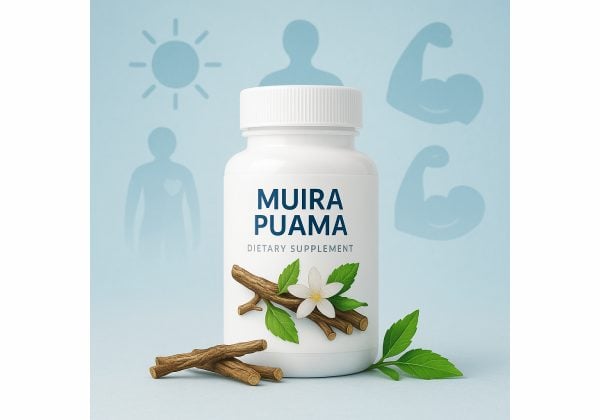
Muira Puama (Ptychopetalum olacoides), often called “potency wood,” is a small Amazonian tree whose bark and roots have been used for centuries to support sexual vitality and nervous system resilience. Today it appears in men’s and women’s blends marketed for libido, stress, and cognitive clarity. Early laboratory work suggests interesting mechanisms—ranging from antioxidant and anticholinesterase actions to diterpenes that influence nerve growth signaling—yet human evidence is still modest. A few small clinical studies (including combination formulas) report improved sexual desire or function, while modern reviews emphasize that benefits are likely mild and product quality varies widely. If you are curious, the smartest way to try Muira Puama is to focus on standardized extracts from reputable brands, start with conservative doses, and track concrete outcomes (energy, arousal, sleep, mood) over 4–6 weeks. This guide distills what’s known—what it may help, how to use it safely, what to avoid, and how to decide whether it deserves a place in your routine.
Essential Insights
- May modestly support libido and sexual function; cognitive or stress benefits are preliminary.
- Start with 250–500 mg/day of a concentrated extract or 1–2 g/day dried bark; increase only if well tolerated.
- Possible stimulant-like effects (restlessness, sleep disruption); take earlier in the day and avoid high doses.
- Avoid if pregnant or breastfeeding, and be cautious with cardiovascular or psychiatric conditions.
Table of Contents
- What is Muira Puama?
- Does Muira Puama work?
- How to use Muira Puama day to day
- What changes your results
- Common mistakes and fixes
- Side effects and who should avoid it
- Evidence in plain English: what we actually know
What is Muira Puama?
Muira Puama is the common name for Ptychopetalum olacoides, a shrub-like Amazonian tree in the Olacaceae family. Traditional preparations use root and bark decoctions or alcohol tinctures for “nervous weakness,” fatigue, sexual dysfunction, and recovery following illness. In Brazilian folk practice it is also combined with other botanicals (for example, guaraná or catuaba) in tonics for stamina and libido.
Modern analysis shows a diverse chemistry. Researchers have identified clerodane-type diterpenoids, lignans, alkaloids (such as magnoflorine and menisperine), phenolic acids, and essential oil components (e.g., α-pinene, β-caryophyllene). Of special interest are diterpenoids that, in cell studies, can potentiate nerve growth factor (NGF)–mediated neurite outgrowth—one reason Muira Puama appears in “nootropic” blends. Animal work has also found anticholinesterase activity in memory-relevant brain areas, antioxidant actions that may help buffer stress-related oxidative load, and mixed effects on mood-related behavior. This range of mechanisms—modest cholinergic support, antioxidant defense, and neuronal plasticity signals—helps explain the plant’s reputation as both a “nerve tonic” and a sexual health aid.
Commercial products typically use concentrated extracts of bark or root, often labeled 4:1 to 10:1 (grams of raw herb per gram of extract) or presented as a tincture ratio (for example, 1:5 in 45% ethanol). Standardization is not yet consistent across industry; some labels list “total alkaloids” or “sterols,” while others provide no marker compounds at all. Because composition varies with plant part, harvest, and extraction method, two products with the same milligram dose may behave quite differently.
Where does it fit? People most often try Muira Puama for low sexual desire, mild erectile difficulties, low energy under stress, or mental fatigue. It is not a replacement for guideline-based care when there is an underlying medical driver (cardiometabolic disease, hormonal disorders, depression, medication side effects). Think of it as an adjunct worth a cautious trial if you value botanicals and prefer incremental, lifestyle-aligned approaches.
Does Muira Puama work?
Short answer: it might help some people, but expectations should be modest. Human research is limited, and the strongest positive results come from combination formulas rather than Muira Puama alone. In one exploratory study among women, a blend containing Muira Puama and ginkgo reported improvements in sexual desire and satisfaction. Small open-label experiences and observational reports in men suggest perceived improvements in desire or performance over 2–8 weeks, but these designs are highly prone to bias and placebo effects. Modern evidence reviews of sexual health supplements emphasize that, while certain ingredients (e.g., Panax ginseng or L-arginine) have reasonably consistent randomized trial support, Muira Puama’s data remain preliminary and inconsistent.
Why do some users still report benefits? Several plausible mechanisms line up with common libido bottlenecks:
- Stress and fatigue: Antioxidant and adaptogenic-like effects may reduce stress drag on desire and performance. When sleep and coping improve, libido often follows.
- Neurotransmission: Anticholinesterase activity and diterpenoids that interact with neuronal growth signaling could, in theory, support mental clarity and arousal cues.
- Peripheral effects: In isolated tissue studies, extracts show limited smooth-muscle relaxation in corpus cavernosum compared with other botanicals, so Muira Puama’s sexual effects may be more central (brain-driven desire) than purely vascular.
What outcomes are realistic? If Muira Puama helps, the typical pattern is subtle: enhanced interest in intimacy, slightly easier arousal, and a lift in mental energy or focus. Benefits usually emerge within 2–4 weeks when taken daily, provided sleep, stress management, and relationship factors are addressed in parallel. People with psychogenic or stress-related libido dips may notice more than those with organic erectile dysfunction driven by vascular disease or diabetes.
Finally, product quality matters. Reviews of marketed “male enhancement” supplements repeatedly find adulteration with hidden prescription drugs or underdosed actives. Choosing third-party tested products greatly affects your experience—and your safety.
Bottom line: consider Muira Puama a tier-two option for libido or vitality—worth a careful trial if you prefer botanical strategies—but not a stand-alone solution for medically complex sexual dysfunction.
How to use Muira Puama day to day
Forms you will see
- Standardized extract capsules: Commonly 4:1 to 10:1 concentrates of bark or root.
- Tincture (alcohol extract): Often 1:5 in 40–60% alcohol.
- Dried bark/root for decoction (tea): Simmered 15–25 minutes to extract constituents.
Practical starting doses
- Extract capsules: Begin with 250–500 mg/day, taken in the morning with food. If well tolerated after 7–10 days, some increase to 500–1,000 mg/day, divided morning and early afternoon. Because products vary, follow the label and do not exceed the manufacturer’s maximum daily dose.
- Tincture: Typical starting range 2–4 mL, up to 2 times daily, taken earlier in the day to avoid sleep disruption.
- Tea/decoction: 1–2 g/day of dried bark gently simmered in ~250 mL water for 15–20 minutes; strain before drinking.
Timing and pairing
- Take earlier in the day to reduce the chance of insomnia or restlessness.
- Consistent daily use for 4–6 weeks is a fair trial window before judging effect.
- If using for sexual support, pair with foundations: stress reduction, exercise, good sleep, and, if needed, guideline-directed therapies. For vascular ED, proven agents (e.g., PDE5 inhibitors) remain first-line; botanicals are adjuncts.
Stacking with other supplements
- For libido: consider pairs with Panax ginseng or L-arginine (if appropriate), which have stronger human data. Introduce one new agent at a time to identify drivers of benefit or side effects.
- For cognitive support: common companions include rhodiola (earlier in the day) or bacopa (evening), but avoid stimulant-heavy stacks that increase anxiety or disturb sleep.
Quality safeguards
- Look for third-party testing (NSF, USP, Informed Choice, BSCG, or equivalent) and transparent extract ratios/markers.
- Avoid products that make drug-like promises, include “proprietary blends” without amounts, or use sensational branding common in adulterated sexual products.
- Store in a cool, dry place; tightly cap tinctures to minimize solvent evaporation.
When to stop
- If you experience persistent insomnia, jitteriness, headaches, GI upset, palpitations, or mood changes, discontinue and reassess.
- Stop 1–2 weeks before planned surgery.
- If there is no measurable benefit after 6 weeks at a well-tolerated dose, consider discontinuation or discussing alternatives with a clinician.
What changes your results
Individual responses to Muira Puama vary. These variables often explain why one person feels a clear lift and another notices nothing:
- Extract strength and plant part: Root vs. bark, ethanol vs. water extraction, and 4:1 vs. 10:1 concentration meaningfully change alkaloid and diterpenoid content. Two “500 mg” capsules from different brands are not equivalent. Favor products with defined ratios and, ideally, a marker (e.g., total alkaloids).
- Dosing and timing: Higher is not always better. Some people do best with 250–500 mg/day; others tolerate 750–1,000 mg/day split morning/early afternoon. Evening dosing is more likely to disturb sleep and mask daytime benefits.
- Sleep, stress, and training load: If you are chronically sleep-restricted or over-training, stimulant-leaning extracts can feel like they “work” for a week, then crash. Stabilize sleep (7–9 hours), manage stress, and periodize training; Muira Puama should support—not replace—recovery.
- Underlying drivers of sexual symptoms: For psychogenic or stress-dominant libido dips, central arousal effects may help. For vascular ED linked to diabetes, atherosclerosis, or antihypertensive side effects, botanical adjuncts rarely match prescription efficacy.
- Medications and other supplements: Caffeine, yohimbe, nicotine, and aggressive pre-workouts can amplify restlessness. Sedatives can blunt perceived stimulation. If you use PDE5 inhibitors, keep your prescriber in the loop when adding any supplement.
- Diet and hydration: Heavy alcohol use and dehydration impair arousal and performance. A balanced diet with adequate protein, micronutrients, and omega-3 fats supports the same pathways Muira Puama is supposed to “boost.”
- Expectations and measurement: Use a simple tracker for libido (0–10), morning energy, and sleep quality. Note changes at baseline, week 2, week 4, and week 6. Objective tracking counters placebo and helps you make a clear keep/stop decision.
Who tends to feel the most?
- People addressing multiple basics simultaneously (sleep, exercise, stress).
- Those with mild rather than severe dysfunction.
- Individuals sensitive to central arousal cues (focus, motivation), who perceive small improvements as meaningful.
Who tends to feel less?
- Those expecting a drug-like immediate effect.
- People with untreated medical causes (endocrine, vascular, neurological).
- Users of under-dosed or adulterated products.
Use these factors to tune your trial: normalize sleep, pick a verified extract, start low, track outcomes, and adjust only one variable at a time.
Common mistakes and fixes
1) Taking it too late in the day
- Problem: Nighttime dosing increases the risk of insomnia, fragmented sleep, and next-day fatigue—canceling any daytime benefit.
- Fix: Take Muira Puama in the morning (and early afternoon if splitting doses). If sleep remains sensitive, use a single morning dose only.
2) Chasing high milligram numbers
- Problem: A “1,000 mg” label sounds potent, but without extract ratio or markers it may be under-active—or, conversely, too stimulating.
- Fix: Prioritize extract transparency (e.g., 10:1, 1:5 tincture) and third-party testing over big numbers. Start at 250–500 mg/day and titrate cautiously.
3) Expecting one herb to solve complex problems
- Problem: Libido is affected by relationship health, mental wellbeing, sleep, medications, and cardiometabolic status.
- Fix: Pair Muira Puama with behavioral basics and medical care when appropriate. For erectile rigidity specifically, talk to a clinician about proven therapies while you optimize foundations.
4) Ignoring adulteration risk
- Problem: Some “male enhancement” products hide prescription drugs (e.g., sildenafil or tadalafil). Results can be dramatic—but unsafe—and interactions dangerous.
- Fix: Avoid sensational branding and “proprietary blends.” Choose reputable brands with independent testing. Do not buy “honey” or “coffee” sex products marketed with outsized promises.
5) Stacking too many stimulants
- Problem: Combining Muira Puama with high caffeine, yohimbe, or aggressive pre-workouts can cause anxiety, palpitations, or blood pressure swings.
- Fix: Keep your stack simple. If adding Muira Puama, reduce other stimulants and monitor heart rate, sleep, and anxiety.
6) No outcome tracking
- Problem: Without a baseline, mild benefits or side effects go unnoticed.
- Fix: Before starting, record libido/interest (0–10), erection quality (0–10) or arousal ease, morning energy (0–10), and sleep quality. Recheck at 2, 4, and 6 weeks.
7) Pushing through side effects
- Problem: Restlessness, headaches, GI upset, or mood changes can worsen over time.
- Fix: Stop or step down the dose at first signs. Re-challenge later only if side effects resolve and you still want to test benefits.
A careful, measured approach prevents most issues: vetted product, morning dosing, conservative titration, limited stacks, and honest tracking.
Side effects and who should avoid it
Muira Puama is generally well tolerated at typical supplemental doses, but stimulant-like effects can occur—especially with higher doses or sensitive individuals.
Commonly reported (usually mild):
- Restlessness, jitteriness, or feeling “wired”
- Difficulty falling asleep (when taken late)
- Headache or lightheadedness
- Stomach discomfort, nausea, or loose stools
Less common considerations:
- Anxiety or mood changes: Animal work has noted anxiogenic-like behavior at certain doses. If you have an anxiety disorder, start low and monitor closely—or avoid entirely if you notice worsening symptoms.
- Cardiovascular: Any supplement that feels stimulating could transiently raise heart rate or blood pressure. People with arrhythmias, uncontrolled hypertension, or recent cardiovascular events should avoid use unless cleared by their clinician.
- Hormonal/sexual medications: For erectile dysfunction, prescription PDE5 inhibitors remain first-line. Using Muira Puama is not a substitute for medical evaluation, particularly if ED appears suddenly or is accompanied by other symptoms (chest pain, leg cramps, reduced exercise tolerance).
- Pregnancy and breastfeeding: Avoid—safety data are insufficient.
- Liver and kidney disease: Use only with clinician guidance; safety data are limited.
- Surgery: Stop 1–2 weeks prior due to theoretical blood pressure and CNS effects.
Drug and supplement interactions (prudence list):
- Stimulants (high-dose caffeine, yohimbe, nicotine): may amplify restlessness or palpitations.
- Sedatives: could blunt perceived benefits or create seesaw energy patterns.
- Antihypertensives and psychiatric medications: while no classic interactions are established, any new stimulant-like agent can complicate management—coordinate with your prescriber.
Adulteration warning: Sexual enhancement supplements are, by far, the category most often tainted with undisclosed prescription drugs. Sudden dramatic effects (or side effects) are a red flag. Choose trusted brands and avoid sketchy “honey,” “coffee,” or “instant” products.
If you experience chest pain, severe headache, fainting, sustained tachycardia, or signs of an allergic reaction (hives, swelling, difficulty breathing), stop immediately and seek medical care.
Evidence in plain English: what we actually know
What is solid:
- Traditional use and preclinical biology are well established. Lab and animal studies describe antioxidant actions, anticholinesterase effects, and diterpenoids that can enhance NGF-mediated neurite outgrowth. These mechanisms plausibly support cognition, stress tolerance, and central arousal.
- Modern safety reviews covering herbal sexual enhancers conclude that most plants appear safe at usual doses but highlight overdose, self-medication with unstandardized products, and drug interactions as real concerns—plus the industry-wide problem of adulteration in sexual products.
What is suggestive:
- Sexual function: Small clinical experiences, including combination formulas with Muira Puama, report improvements in desire and satisfaction in some participants. However, these are limited by design (open-label, non-randomized, or multi-ingredient blends).
- Cognition/stress: Animal and cell studies are encouraging, but human trials are lacking. Any nootropic claims are, at this stage, hypotheses supported by mechanisms—not by robust clinical outcomes.
What remains uncertain:
- Optimal dosing and markers: No consensus exists on standardization (which compounds, at what levels). This creates variability between products and studies.
- Long-term safety: There are no large, long-duration trials in humans using Muira Puama alone. Absence of evidence is not evidence of absence; prudence is warranted.
- Who benefits most: We still cannot predict responders reliably. People with stress-related libido loss or mental fatigue plausibly benefit more than those with vascular ED, but data are insufficient to make firm subgroup recommendations.
How to interpret all this as a consumer:
- Treat Muira Puama as a supportive adjunct rather than a core therapy. If you’re addressing sleep, exercise, relationship factors, and medical contributors, a 4–6 week, well-tolerated trial using a verified extract is reasonable.
- Evaluate with measurable outcomes (interest, arousal ease, sleep, focus). If benefits are not clear at 6 weeks, move on.
- Favor transparency and testing over marketing. The right product—and realistic expectations—matter more than chasing milligram totals.
Net takeaway: interesting plant, promising mechanisms, limited human data. Used thoughtfully, it may provide a gentle lift in libido or energy for some people—just do not expect a prescription-strength effect.
References
- Dietary Supplements for Erectile Dysfunction: Analysis of Marketed Products, Systematic Review, Meta-Analysis and Rational Use – PMC 2023 (Systematic Review)
- Pharmacology of Herbal Sexual Enhancers: A Review of Psychiatric and Neurological Adverse Effects – PubMed 2020 (Systematic Review)
- Efficacy and Safety of Common Ingredients in Aphrodisiacs Used for Erectile Dysfunction: A Review – PubMed 2020 (Systematic Review)
- Effects of Herbal vX on libido and sexual activity in premenopausal and postmenopausal women – PubMed 2000 (Clinical Study)
Disclaimer
This article is for educational purposes only and is not a substitute for personalized medical advice, diagnosis, or treatment. Always talk with a qualified healthcare professional before starting any new supplement, especially if you have health conditions, take prescription medications, are pregnant or breastfeeding, or are planning surgery. If you experience concerning symptoms, stop the supplement and seek medical care.
If you found this guide useful, please consider sharing it on Facebook, X (formerly Twitter), or your favorite platform, and follow us for future evidence-based wellness explainers. Your support helps us keep creating high-quality, reader-first content.

